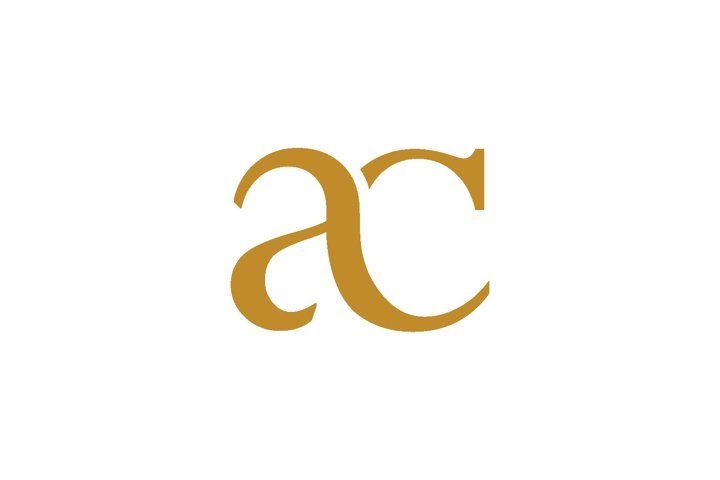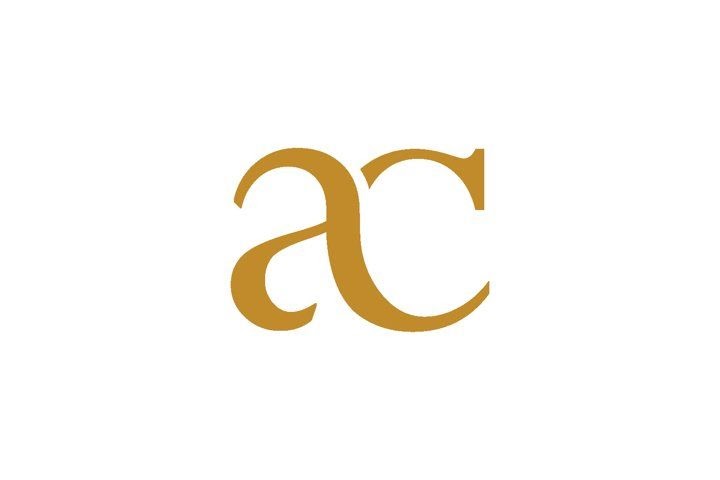A startup with a brilliant business idea is aiming to get its operations up and running. From humble beginnings, the company proves the worthiness of its model and products, steadily growing thanks to the generosity of friends, family and the founders' own financial resources. Over time, its customer base begins to grow, and the business begins to expand its operations and its aims. Before long, the company has risen through the ranks of its competitors to become highly valued, opening the possibilities for future expansion to include new offices, employees, and even an initial public offering (IPO).
KEY TAKEAWAYS
- Many companies have to complete a number of fundraising rounds before getting to the initial public offering (IPO) stage.
- These fundraising rounds allow investors to invest money into a growing company in exchange for equity/ownership.
- The initial investment—also known as seed funding—is followed by various rounds, known as Series A, B, and C.
- A new valuation is done at the time of each funding round.
- Valuations are determined by various factors, including market size, company potential, current revenues, and management.
These funding rounds provide outside investors the opportunity to invest cash in a growing company in exchange for equity, or partial ownership of that company. When you hear discussions of Series A, Series B, and Series C funding rounds, these terms are referring to this process of growing a business through outside investment.
What Are Funding Rounds for Startups?
There are other types of funding rounds available to startups, depending upon the industry and the level of interest among potential investors. It's not uncommon for startups to engage in what is known as "seed" funding or angel investor funding at the outset.
Next, these funding rounds can be followed by Series A, B and C funding rounds, as well as additional efforts to earn capital as well, if appropriate. Series A, B and C are necessary ingredients for a business that decides bootstrapping, or merely surviving off of the generosity of friends, family, and the depth of their own pockets, will not suffice.
Below, we'll take a closer look at what these funding rounds are, how they work and what sets them apart from one another. The path for each startup is somewhat different, as is the timeline for funding. Many businesses spend months or even years in search of funding, while others (particularly those with ideas seen as truly revolutionary or those attached to individuals with a proven track record of success) may bypass some of the rounds of funding and move through the process of building capital more quickly.
How Funding Rounds Work
Before exploring how a round of funding works, it's necessary to identify the different participants. First, there are the individuals hoping to gain funding for their company. As the business becomes increasingly mature, it tends to advance through the funding rounds; it's common for a company to begin with a seed round and continue with A, B, and then C funding rounds.
On the other side are potential investors. While investors wish for businesses to succeed because they support entrepreneurship and believe in the aims and causes of those businesses, they also hope to gain something back from their investment.
For this reason, nearly all investments made during one or another stage of developmental funding is arranged such that the investor or investing company retains partial ownership of the company. If the company grows and earns a profit, the investor will be rewarded commensurate with the investment made.
What Is the Funding Valuation?
Before any round of funding begins, analysts undertake a valuation of the company in question. Valuations are derived from many different factors, including management, proven track record, market size, and risk.
One of the key distinctions between funding rounds has to do with the valuation of the business, as well as its maturity level and growth prospects. In turn, these factors impact the types of investors likely to get involved and the reasons why the company may be seeking new capital.
Pre-Seed Funding
The earliest stage of funding a new company comes so early in the process that it is not generally included among the rounds of funding at all. Known as "pre-seed" funding, this stage typically refers to the period in which a company's founders are first getting their operations off the ground. The most common "pre-seed" funders are the founders themselves, as well as close friends, supporters and family.
Depending upon the nature of the company and the initial costs set up with developing the business idea, this funding stage can happen very quickly or may take a long time. It's also likely that investors at this stage are not making an investment in exchange for equity in the company. In most cases, the investors in a pre-seed funding situation are the company founders themselves.
Seed Funding
Seed funding is the first official equity funding stage. It typically represents the first official money that a business venture or enterprise raises. Some companies never extend beyond seed funding into Series A rounds or beyond.
You can think of the "seed" funding as part of an analogy for planting a tree. This early financial support is ideally the "seed" which will help to grow the business. Given enough revenue and a successful business strategy, as well as the perseverance and dedication of investors, the company will hopefully eventually grow into a "tree."
Seed funding helps a company to finance its first steps, including things like market research and product development. With seed funding, a company has assistance in determining what its final products will be and who its target demographic is. Seed funding is used to employ a founding team to complete these tasks.
How Seed Funding Works
There are many potential investors in a seed funding situation: founders, friends, family, incubators, venture capital companies and more. One of the most common types of investors participating in seed funding is a so-called "angel investor."
Angel investors tend to appreciate riskier ventures (such as startups with little by way of a proven track record so far) and expect an equity stake in the company in exchange for their investment.
While seed funding rounds vary significantly in terms of the amount of capital they generate for a new company, it's not uncommon for these rounds to produce anywhere from $10,000 up to $2 million for the startup in question.
For some startups, a seed funding round is all that the founders feel is necessary in order to successfully get their company off the ground; these companies may never engage in a Series A round of funding. Most companies raising seed funding are valued at somewhere between $3 million and $6 million.
Once a business has developed a track record (an established user base, consistent revenue figures, or some other key performance indicator), it could be ready to raise additional capital.
What Is Series A Funding?
The first round after the seed stage is Series A funding. In this round, it’s important to have a plan for developing a business model that will generate long-term profit. Often times, seed startups have great ideas that generate a substantial amount of enthusiastic users, but the company doesn’t know how it will monetize the business.
Typically, Series A rounds raise approximately $2 million to $15 million, but this number has increased on average due to high tech industry valuations, or unicorns. In 2021, the median Series A funding was $10 million.1
In Series A funding, investors are not just looking for great ideas. Rather, they are looking for companies with great ideas as well as a strong strategy for turning that idea into a successful, money-making business. For this reason, it's common for firms going through Series A funding rounds to be valued at up to $24 million.1
The investors involved in the Series A round come from more traditional venture capital firms. Well-known venture capital firms that participate in Series A funding include Sequoia Capital, IDG Capital, Google Ventures, and Intel Capital.1
How Series A Funding Works
By this stage, it's also common for investors to take part in a somewhat more political process. It's common for a few venture capital firms to lead the pack. In fact, a single investor may serve as an "anchor." Once a company has secured a first investor, it may find that it's easier to attract additional investors as well. Angel investors also invest at this stage, but they tend to have much less influence in this funding round than they did in the seed funding stage.
It is increasingly common for companies to use equity crowdfunding in order to generate capital as part of a Series A funding round. Part of the reason for this is the reality that many companies, even those which have successfully generated seed funding, tend to fail to develop interest among investors as part of a Series A funding effort. Indeed, fewer than 10% of seed-funded companies will go on to raise Series A funds as well.1
What Is Series B Funding?
Series B rounds are all about taking businesses to the next level, past the development stage. Investors help startups get there by expanding market reach. Companies that have gone through seed and Series A funding rounds have already developed substantial user bases and have proven to investors that they are prepared for success on a larger scale. Series B funding is used to grow the company so that it can meet these levels of demand.
Building a winning product and growing a team requires quality talent acquisition. Bulking up on business development, sales, advertising, tech, support, and employees costs a firm a few pennies.
How Series B Funding Works
Companies undergoing a Series B funding round are well-established, and their valuations tend to reflect that; most Series B companies have valuations between around $30 million and $60 million.1
Series B appears similar to Series A in terms of the processes and key players. Series B is often led by many of the same characters as the earlier round, including a key anchor investor that helps to draw in other investors. The difference with Series B is the addition of a new wave of other venture capital firms that specialize in later-stage investing.
What Is Series C Funding?
Businesses that raise a Series C funding are already quite successful. These companies look for additional funding in order to help them develop new products, expand into new markets, or even to acquire other companies. In Series C rounds, investors inject capital into the meat of successful businesses, in an effort to receive more than double that amount back. Series C funding is focused on scaling the company, growing as quickly and as successfully as possible.
One possible way to scale a company could be to acquire another company. Imagine a hypothetical startup focused on creating vegetarian alternatives to meat products. If this company reaches a Series C funding round, it has likely already shown unprecedented success when it comes to selling its products in the United States. The business has probably already reached targets coast to coast. Through confidence in market research and business planning, investors reasonably believe that the business would do well in Europe.
Perhaps this vegetarian startup has a competitor who currently possesses a large share of the market. The competitor also has a competitive advantage from which the startup could benefit. The culture appears to fit well as investors and founders both believe the merger would be a synergistic partnership. In this case, Series C funding could be used to buy another company. As the operation gets less risky, more investors come to play.
How Series C Funding Works
In Series C, groups such as hedge funds, investment banks, private equity firms, and large secondary market groups accompany the type of investors mentioned above. The reason for this is that the company has already proven itself to have a successful business model; these new investors come to the table expecting to invest significant sums of money into companies that are already thriving as a means of helping to secure their own position as business leaders.
Most commonly, a company will end its external equity funding with Series C. However, some companies can go on to Series D and even Series E rounds of funding as well. For the most part, though, companies gaining up to hundreds of millions of dollars in funding through Series C rounds are prepared to continue to develop on a global scale.
Many of these companies utilize Series C funding to help boost valuations in anticipation of an IPO. At this point, companies enjoy higher valuations. Companies engaging in Series C funding should have established, strong customer bases, revenue streams, and proven histories of growth.
Companies that do continue with Series D funding tend to either do so because they are in search of a final push before an IPO or, alternatively, because they have not yet been able to achieve the goals they set out to accomplish during Series C funding.
How Many Series of Funding Before IPO?
The typical number of seed rounds that a company goes through before completing an initial public offering (IPO) is three. However, there is no set number of rounds that must be raised.
What Happens After Series C Funding?
Many companies will complete an initial public offering (IPO) after their Series C funding round. However, other companies may need to raise a Series D round to further expand or grow.
What Does Series D Funding Mean?
Series D funding is the fourth stage of fundraising that a business completes after the seed stage. The initial round of funding after the seed stage is Series A. The second is the Series B and then the third is Series C.
The Bottom Line
Understanding the distinction between these rounds of raising capital will help you decipher startup news and evaluate entrepreneurial prospects. The different rounds of funding operate in essentially the same basic manner; investors offer cash in return for an equity stake in the business. Between the rounds, investors make slightly different demands on the startup.
Company profiles differ with each case study but generally possess different risk profiles and maturity levels at each funding stage. Nevertheless, seed investors and Series A, B, and C investors all help ideas come to fruition. Series funding enables investors to support entrepreneurs with the proper funds to carry out their dreams, perhaps cashing out together down the line in an IPO.













%20_%20Logos%20_%20Design%20Bundles.jpg)


%20_%20Logos%20_%20Design%20Bundles.jpg)



0 Comments